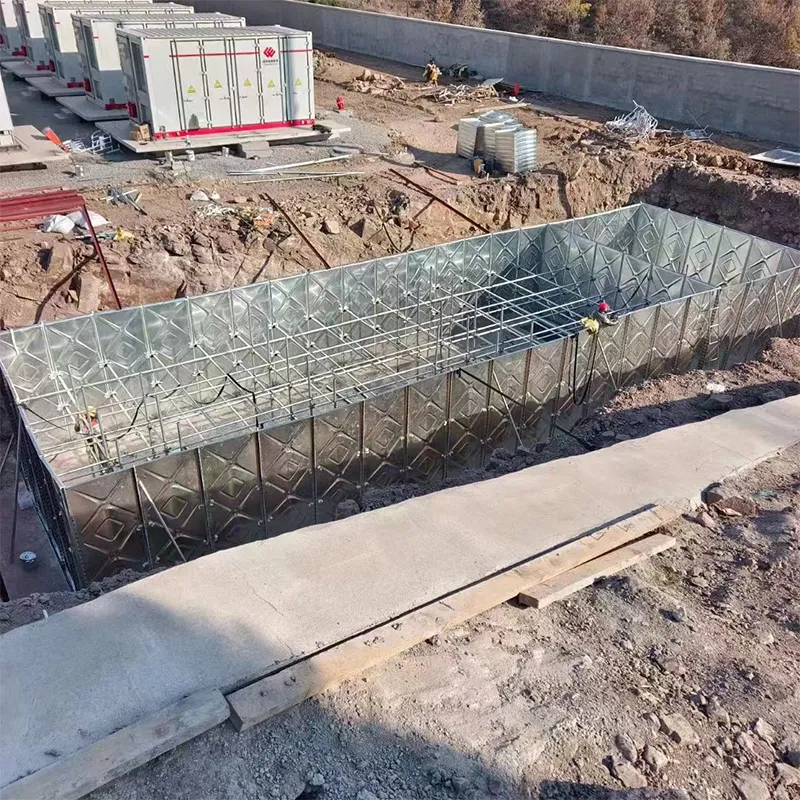loading...
- No. 9, Xingyuan South Street, Dongwaihuan Road, Zaoqiang County, Hengshui, Hebei, China
- admin@zjcomposites.com
- +86 15097380338
- Welcome to visit our website!
frp sheet piling
Understanding FRP Sheet Piling A Modern Solution for Sustainable Construction
In the ever-evolving landscape of construction and civil engineering, the need for durable, eco-friendly materials has become paramount. Among these innovations, Fiber-Reinforced Polymer (FRP) sheet piling emerges as a compelling solution, offering a blend of strength, lightweight properties, and resistance to environmental factors. This article explores the various facets of FRP sheet piling, its benefits, applications, and the future of this remarkable material in construction.
What is FRP Sheet Piling?
FRP sheet piling is a system of interlocking sheets made from a composite material that combines plastic with fibers, typically glass, aramid, or carbon. This combination results in a material that is not only lightweight but also incredibly strong and durable. One of the primary advantages of FRP is its resistance to corrosion, making it an ideal choice for environments that would typically deteriorate traditional materials like steel or wood.
Advantages of FRP Sheet Piling
1. Corrosion Resistance Unlike conventional steel sheet piling, FRP does not rust or corrode when subjected to moisture or chemicals. This quality significantly extends the lifespan of structures, particularly in coastal or industrial settings where exposure to saltwater or pollutants is common.
2. Lightweight FRP sheet piling is significantly lighter than steel or concrete options, which simplifies handling and installation. This can lead to reduced labor costs and a shorter construction timeline.
3. High Strength-to-Weight Ratio Despite its lightweight nature, FRP exhibits a high strength-to-weight ratio, allowing it to withstand substantial loads. This means that engineers can design structures using less material without compromising safety or performance.
4. Environmental Benefits As sustainability becomes an increasing focus, the use of FRP materials contributes positively. Their durability reduces the need for frequent replacements, lowering the environmental impact associated with resource extraction and waste. Moreover, many FRP formulations can be manufactured from recycled materials.
5. Versatility in Design FRP sheet pilings can be produced in various shapes, sizes, and configurations, making them suitable for a wide range of applications. This versatility allows for innovative design solutions that can cater to specific project requirements.
Applications of FRP Sheet Piling
frp sheet piling

FRP sheet piling sees application in various sectors, including
- Marine Construction Given their corrosion resistance, FRP piles are ideal for dock walls, seawalls, and marinas. They offer exceptional protection against harsh marine environments.
- Landfill and Waste Management These materials are increasingly used in managing landfill sites due to their resistance to chemical leachates, thus containing hazardous materials effectively.
- Earth Retention Systems FRP sheet piles are employed in retaining walls and excavations, providing stability and support in construction sites and civil engineering projects.
- Underground Structures Their lightweight nature and ability to withstand environmental stressors make them suitable for underground applications such as tunnels and basements.
The Future of FRP Sheet Piling
As the construction industry continues to seek more sustainable practices, the demand for materials like FRP sheet piling is anticipated to grow. Innovations in composite materials are expected to enhance the properties of FRP, making it even more attractive for various construction applications. Research into cost-effective production methods and enhanced manufacturing techniques will further drive the adoption of FRP.
Additionally, continued education and awareness about the superior properties of FRP among engineers and architects are crucial. By promoting the benefits and applications of FRP sheet piling, the industry can shift towards more sustainable material choices that align with global environmental goals.
Conclusion
FRP sheet piling represents a transformative step in construction technology. With its remarkable durability, lightweight nature, and environmental benefits, it offers a modern answer to many challenges faced in construction today. As the industry evolves, embracing innovative materials like FRP will be key to creating sustainable, resilient infrastructures for the future.
-
GRP Structures: The Future of Lightweight, High-Performance EngineeringNewsJun.20,2025
-
FRP Water Tank: High-Performance Storage for Corrosive and Clean Water SystemsNewsJun.20,2025
-
FRP Square Tube: The New Industry Standard for Chemical and Structural ApplicationsNewsJun.20,2025
-
FRP Pultruded Profiles: The Ultimate Choice for Lightweight Structural StrengthNewsJun.20,2025
-
FRP Handrails: The Safer, Smarter, and Stronger Choice for Modern InfrastructureNewsJun.20,2025
-
FRP Grating: The Smart Solution for Durable, Lightweight Industrial FlooringNewsJun.20,2025
-
Why Choose a Galvanized Water Tank for Your Storage NeedsNewsMay.21,2025
